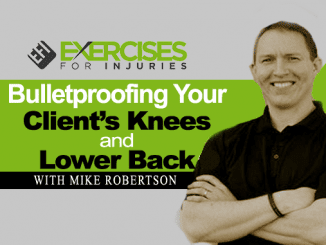
If you have ever suffered chronic back pain, you know how debilitating it can be. It can affect your ability to work, socialize, exercise, and enjoy life. If a flare-up hits, it can throw you for a loop. Back pain is not something we can avoid all the time—even healthy people get aches and pains from time to time. However, when the back pain becomes frequent, it may indicate a more significant problem that needs treatment. What do you do when a back flare-up hits? Keep reading to find out more.
Yesterday I had my first back flare-up in about two years. I was a work and was in an awkward posture lifting something. As soon as I lifted, I felt that little click. I hoped it was nothing, but I could feel the pain increase in my back and all the muscles in my lower back tighten up.
I was right in the middle of work and could go now where I had to keep working. There was no lying down. I had to take care of it right now. I was able to get through the day by managing my back pain and doing three things to decrease my lower back pain.
Let me share with you three things I did right away as soon as I felt my lower back flare up to decrease the pain.
#1 – Keep Moving
I kept moving; I wanted to stop and not do anything, but I knew that if I stopped and rested, in the end, things would get worse. I kept walking around and moving around. This kept me lost and decreased the likelihood that my back would lock up.
#2 – Deep Breathing
Every few minutes, I would stop and stand in place and perform belly breathing.
I would focus on breathing for a few breaths that air entering my lungs and abdomen. And I would not let my chest elevate and concentrate on my belly elevating. Then breathing out, my nose controlled, letting out all the air out of my stomach. As I breathe out, I focus on blowing out all the tension in the muscles in my lower back, and I tell myself the back pain will pass.
#3 – Setting My Core
You want to stand up straight but need to move around to get through the work day. When you have to bend forward, reach, or squat, remember to activate your deep abdominal muscles to help them assist in stabilizing your back.
Often when you flare up your back, these muscles begin not to work correctly even though they are vital in stabilizing your back. By setting your core, you wake them up and get them to help stabilize your back and decrease the stress on your back.
You can do much when your back flares to address the initial pain. What I do and know will help you is to keep moving to prevent the back from locking up, stop taking a few belly breaths to battle the tension in your lower back, and take an extra second to set your core before movement.
I hope this helps you. I know this was key in the pain phase of my back flare-up. In future blog posts, I will talk about the mobility and muscle imbalances phases.
Rick Kaselj, MS
P.S. – If you are looking for a quick way to avoid back pain, check out…





